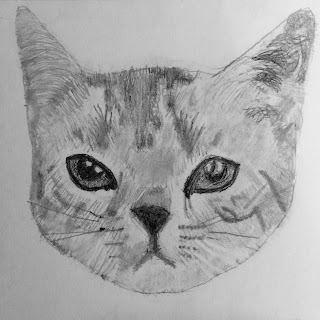The cheetah can run from speeds of 0-40 mph in a few seconds and can reach speeds up to 60 mph tops. When we have opportunities we should go for them because life is short. For example, when I found the pantry unlocked, I entered to find a piece of cake and I ate it much like a cheetah capturing a meal. Similarly a cheetah learns to hunt and build its speed and stamina over years. I remember as a child I liked to watch Scooby Doo and sketch the monsters. I thought to myself, these drawings look so shoddy and not professional. I wanted my drawings to improve so they could be sold. I kept drawing and later in high school I developed my 3D rendering skills. Following high school I wanted to sell my work but it was sentimental. When I realized the artwork could be reproduced, I was able to let the originals sell. By distributing prints of my work and having digital images to keep, I became aware of the opportunities to make a living as an artist. Now I have realized that I can create work with the intention of selling the original. If you see an opportunity take it because you may not get it again. Every opportunity is unique. The circumstances may not come again for years.
An elongated spine allows the cheetah to take large stride improving the ability to run long distances. It’s claws grip the soil pushing it forward with momentum. This symbolizes that we are all built by higher power and designed for special purposes. A spine is our foundation. It is our bread and butter. A Cheetah’s spine gives it grace and speed. We all have our own special talents. It’s because of a cheetah’s large heart and lungs that it is able to take in great amounts of oxygen allowing it to run at great speeds. This is symbolic of proportion(s) for expansion. If you cannot open your heart you can not accomplish your goals. My goals are art and writing. My creative ideas in art often stem from dreams and life experiences. These give me inspiration to create my works that can inspire others.
The ancient Egyptians adored cheetahs and trained them to hunt. They believed the black spots on the Cheetah’s eyes are a reminder to grieve when losing something precious. We must fight the fight to keep moving on, just as the Cheetah does. The Cheetah is easily hidden from predators because of it’s amber fur and spots. A person might be compelled to blend in as if camouflaged. Sometimes you have to camouflage and sometimes you have to expose yourself so you can move forward. You don’t always have to be on the defense, you have to be on the offense sometimes. When I’m selling my work I have to be on the offense. I provide my patrons with friendly customer service to better their experience.
The cheetah is a day hunter and thus has black markings around the eyes to protect it from the blazing sunlight in the savannahs where it lives. These markings look like tears. Drawing the Cheetah was not like other cats, the skull is smaller and elongated. To achieve the spot effect I had to push the pencil tip to create a hazy smudging texture. Drawing the markings around the eyes gave the appearance of applying makeup.
Symbolic meanings of the cheetah include: Speed, Survival, Passion, Progress, Assertion, Evolution, Flexibility, Protection, Perception, Expression, Opportunity, and Adaptability




